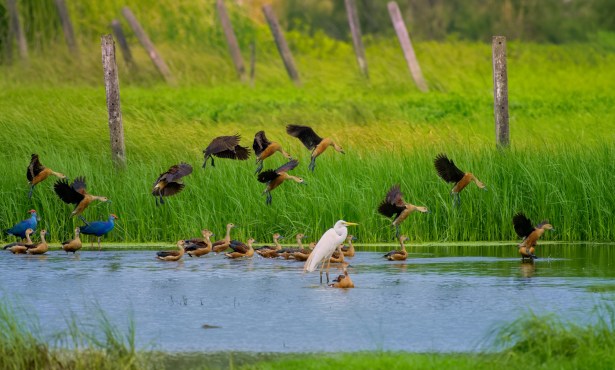Biomimicry Is Improving Electrical Wind Generation
The Earth’s Overtaxed Resources Are Conserved by Improving Wind Power Efficiency

For centuries, humans have harnessed the wind — mainly for pumping water and milling flour. Now wind turbines are playing a key role in the clean energy transition. These big, sleek machines seem to exemplify efficiency, but they can be made even more efficient and less disruptive to their surroundings.
Biome Renewables, a Canadian company, is developing improvements by mimicking nature. They have reduced turbine noise by investigating how owls fly — creatures legendary for their silent flight. As a wind turbine blade slices through air, it creates one airstream above and one below, each traveling at a different speed. When the two currents meet behind the blade, they collide, producing wild and noisy turbulence. A turbine blade acts like an owl’s wing. When examining owls, they discovered a specialized fringe along the trailing edge of wing feathers that forces air to mix at specific locations, muffling the sound of the air flowing around them and enabling soundless flight.
From their observations, Biome Renewables came up with a serrated-edge design for the trailing portion of a turbine blade. As air rushes around the blade, some of it curls down into the space at the base of the serrated teeth, generating one sound wave, and some of it curls down at the tips of the teeth, generating a second sound wave a moment later. The troughs of the first sound wave align with the peaks of the second, canceling each other out. Wind-tunnel tests have shown that this technology can reduce noise by 50-80 percent. Moreover, the reduction of turbulence behind the blade allows the turbine to spin slightly faster in wind of the same speed, generating more power.
To boost efficiency even more, Biome Renewables found a pattern from an entirely different realm of nature. Whirling blades create suction that pulls air toward the middle, the hub. The company designed a device, called a “Power Cone,” that fits onto the turbine center and smoothly channels air back onto the blades. This aerodynamic enhancement device increased turbine power output by up to 13 percent. Where did they find the inspiration? Falling maple seeds.
The lopsided weight of a maple seed causes it to spin at a certain angle, which redirects wind along the seed’s slender length, accelerating flow toward the tip. Consequently, the seeds swirl around a central point, allowing them to remain aloft longer so they can be carried farther away by the wind. Adopting these same principles to the “Power Cone” gives turbines added torque, increasing their efficiency and electrical output.
Greater output from a turbine at a given wind speed reduces the number of turbines needed to supply our energy requirements, a win for the environment beyond the reduced greenhouse gases from generating clean energy.



